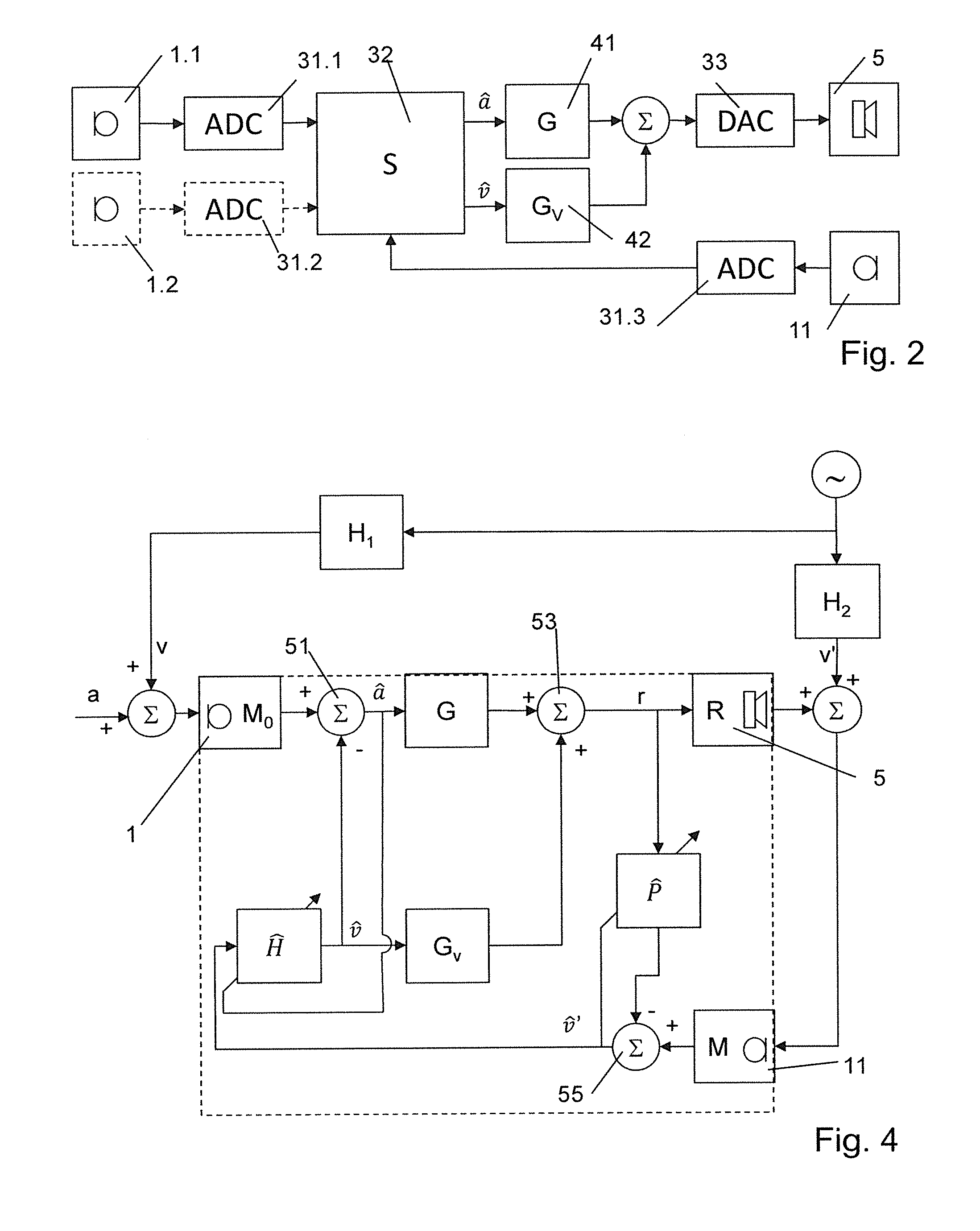Own voice shaping in a hearing instrument
a technology for hearing instruments and own voices, applied in the field of processing signals in hearing instruments, can solve the problems that the optimal setting of the hearing instrument gain in terms of ambient sounds might not be optimal in terms of the own voi
- Summary
- Abstract
- Description
- Claims
- Application Information
AI Technical Summary
Benefits of technology
Problems solved by technology
Method used
Image
Examples
Embodiment Construction
[0060]The hearing instrument schematically represented in FIG. 1 may be of the behind-the-ear (BTE) type (including for example RIC (receiver-in-the-canal)=CRT (canal-receiver-technology), of the in-the-ear (ITE) type, (of the completely-in-the-canal (CIC) type or other ITE type) or of any other type. It comprises an outer microphone 1. In practice, often more than one outer microphones are used, and / or in addition to the outer microphone further receiving means for receiving signals may be present, such as a telecoil receiver, a receiving unit with an antenna for receiving wirelessly transmitted signals, etc. The (electrical) input signal obtained from the at least one outer microphone is processed by a signal processing unit 3 to obtain an output signal or receiver signal. The signal processing unit 3 depicted in FIG. 1 may comprise analog-to-digital conversion means and any other auxiliary means in addition to a digital signal processing stage. The signal processing unit may be p...
PUM
 Login to View More
Login to View More Abstract
Description
Claims
Application Information
 Login to View More
Login to View More - R&D
- Intellectual Property
- Life Sciences
- Materials
- Tech Scout
- Unparalleled Data Quality
- Higher Quality Content
- 60% Fewer Hallucinations
Browse by: Latest US Patents, China's latest patents, Technical Efficacy Thesaurus, Application Domain, Technology Topic, Popular Technical Reports.
© 2025 PatSnap. All rights reserved.Legal|Privacy policy|Modern Slavery Act Transparency Statement|Sitemap|About US| Contact US: help@patsnap.com



